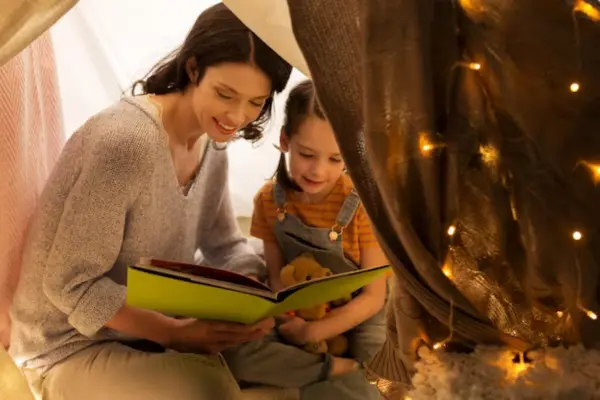Do you remember when your child was so captivated by a story that they asked you to tell it again and again? Or maybe they made up their adventure, filled with wild creatures and exciting scenarios? That’s the magic of storytelling! It's a way to connect with your child, improve their imagination, and enhance their creativity. Whether you're reading from a book or making up a tale on the spot, there are simple techniques that can help make your stories more engaging and fun. Let’s dive into five storytelling tips to keep your child excited and involved.
1. Use Your Voice to Bring the Story to Life

When telling a story, your voice can transform an ordinary tale into an unforgettable experience. Imagine you’re telling a pirate story—by changing your voice, you can bring the characters to life. Use a tone for the pirate and a more excited one when the treasure is found. Altering your volume to suit the mood also helps—whisper when the characters are scared and raise your voice when they’re excited. Using different voices for each character, whether the dragon, the princess, or the monster, will keep your child engaged. Don’t forget to add sound effects like “Boom!” or “Woosh!”— these can make your story feel more like a movie inside your child’s imagination. By playing with your voice, you’ll create a vivid, dynamic experience that will captivate your child.
2. Make It Interactive—Ask Questions

Storytelling doesn’t have to be a one-way street. Engaging your child in the process is one of the best ways to keep them involved and spark their creativity. Instead of just narrating, ask questions as you go. For instance, ask, “What do you think will happen next?” or “How do you think the dragon feels right now?” These questions encourage your child to think and imagine their version of the story, and their answers might take the story in exciting new directions. This interactive approach not only keeps them engaged but also lets them explore their creative ideas within the framework of the story.
3. Use Props or Toys to Act Out the Story

Props and toys can bring a whole new level of engagement to storytelling. If you’re telling a pirate adventure, for example, you can use toy ships or action figures to bring the tale to life. At Big7 Stores, you’ll find a wide range of toys—building blocks, puzzles, musical toys, dinosaurs, and more—that can help you create an immersive experience. By using toys to act out scenes, your child can see the characters and objects in front of them, which makes it easier to follow the story. This also sparks play, as your child may want to continue the adventure with their toys once the story ends. Props turn storytelling into an interactive experience, blending imagination with real-world objects and helping your child stay more involved in the narrative.
4. Let Your Child Finish the Story

While it’s tempting always to finish the story yourself, letting your child take control of the ending can be a powerful way to boost their creativity and confidence. You might ask, “What do you think happens next? Does the wizard find a friend to help, or does he figure it out alone?” By allowing your child to decide about the story’s outcome, you’re teaching them that stories don’t have just one ending—they can go in many different directions. This not only builds their creativity but also encourages flexible thinking, as they see the story unfold in ways they hadn’t expected.
5. Keep the Story Short and Sweet

Children, especially younger ones, often have shorter attention spans, so it’s best to keep your stories simple and concise. A story with a clear beginning, middle, and end will help keep their focus. As your child gets older, you can introduce more complex plots and additional characters, but for younger kids, less is more. Start with a straightforward story and add more details as their interest grows. This approach ensures they’re not overwhelmed and stay engaged from start to finish. Plus, shorter stories leave them wanting more, creating anticipation for the next adventure.
In conclusion, storytelling is an incredible way to bond with your child while nurturing their imagination, language skills, and creativity. By using your voice to bring the story to life, asking engaging questions, incorporating props or toys, letting your child contribute to the story, and keeping it short and sweet, you can create memorable experiences that foster a love for stories. So, the next time you sit down with your child to tell a tale, remember to have fun and let your creativity flow, and if you need toys to help bring your stories to life, visit Big7 Stores for an exciting selection. Let your imagination soar!